Hindi literature includes literature in the various Central Indo-Aryan languages, also known as Hindi, some of which have different writing systems. Earliest forms of Hindi literature are attested in poetry of Apabhraṃśa such as Awadhi and Marwari. Hindi literature is composed in three broad styles- prose, poetry, and prosimetrum. In terms of historical development, it is broadly classified into five prominent forms (genres) based on the date of production. They are:

Dhanpat Rai Srivastava, better known as Munshi Premchand based on his pen name Premchand, was an Indian writer famous for his modern Hindustani literature.
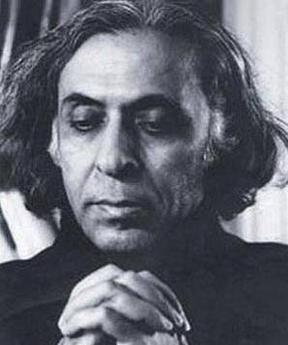
Raja Rao was an Indian-American writer of English-language novels and short stories, whose works are deeply rooted in metaphysics. The Serpent and the Rope (1960), a semi-autobiographical novel recounting a search for spiritual truth in Europe and India, established him as one of the finest Indian prose stylists and won him the Sahitya Akademi Award in 1963. For the entire body of his work, Rao was awarded the Neustadt International Prize for Literature in 1988. Rao's wide-ranging body of work, spanning a number of genres, is seen as a varied and significant contribution to Indian English literature, as well as World literature as a whole.
Intizar Hussain or Intezar Hussain was a Pakistani writer of Urdu novels, short stories, poetry and nonfiction. He is widely recognised as a leading literary figure of Pakistan.

The Sahitya Akademi Award is a literary honour in India, which the Sahitya Akademi, India's National Academy of Letters, annually confers on writers of the most outstanding books of literary merit published in any of the 22 languages of the 8th Schedule to the Indian constitution as well as in English and Rajasthani language.
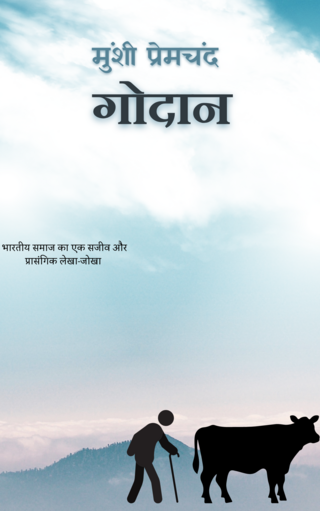
Godaan is a Hindi novel by Munshi Premchand. It was first published in 1936 and is considered one of the greatest Hindi novels of modern Indian literature. Themed around the socio-economic deprivation as well as the exploitation of the village poor, the novel was the last complete novel of Premchand. It follows the story of an old poor farmer, stuck in a debt trap, who wants to purchase a cow, but is unable to do so because of lack of finances. It has been translated into English in 1957 by Jai Ratan and Purushottama Lal as The Gift of a Cow. A 1968 translation by Gordon C. Roadarmel is now considered "a classic in itself".

Amritlal Nagar was one of the prominent Hindi writers of the twentieth century.

Nirmala Deshpande was a noted Indian social activist who had embraced Gandhi and philosophy. She devoted her adult life to the promotion of communal harmony and service to women, tribal people, and the dispossessed in India.
Moorkkanaat Krishnankutty Menon, better known by his pen name Vilasini, was an Indian writer from Kerala who wrote in Malayalam-language. He is the author of India's longest novel, Avakasikal, for which he won the Kendra Sahitya Akademi Award in 1981 and Vayalar Award in 1983. His first novel Niramulla Nizhalukal won the Kerala Sahitya Akademi Award in 1966.
Gurdial Singh Rahi was an Indian writer and novelist who wrote in Punjabi. He started his literary career in 1957 with a short story, "Bhaganwale." He became known as a novelist when he published the novel Marhi Da Deeva in 1964. The novel was later adapted into the Punjabi film Marhi Da Deeva in 1989, directed by Surinder Singh. His novel Anhe Ghore Da Daan was also made into a film of the same name in 2011 by director Gurvinder Singh. Singh was honoured with the Padma Shri in 1998 and Jnanpith Award in 1999.

Suresh Hariprasad Joshi was an Indian novelist, short-story writer, literary critic, poet, translator, editor and academic in the Gujarati language. Along with his teaching career, he led the modernist movement in Gujarati literature. He was prolific writer and he transformed the field of literary criticism.
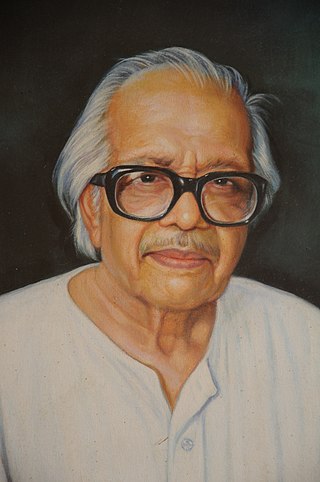
Ravindra Kelekar was a noted Indian author who wrote primarily in the Konkani language, though he also wrote in Marathi and Hindi. A Gandhian activist, freedom fighter and a pioneer in the modern Konkani movement, he was a well known Konkani scholar, linguist, and creative thinker. Kelekar was a participant in the Indian freedom movement, Goa's liberation movement, and later the campaign against the merger of the newly formed Goa with Maharashtra. He played a key role in the founding of the Konkani Bhasha Mandal, which lead the literary campaign for the recognition of Konkani as a full-fledged language, and its reinstatement as the state language of Goa. He authored nearly 100 books in the Konkani language, including Amchi Bhas Konkaneech, Shalent Konkani Kityak, Bahu-bhashik Bharatant Bhashenche Samajshastra and Himalayant, and also edited Jaag magazine for more than two decades.
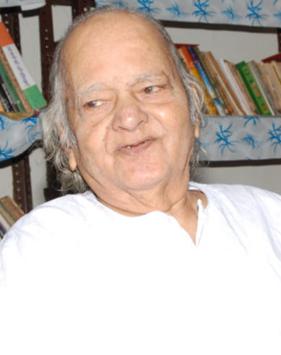
Amarkant was an Indian writer of Hindi literature. His novel Inhin Hathiyaron Se earned him the Sahitya Akademi Award in 2007, and Vyas Samman in year 2009. He was awarded Jnanpith Award for the year 2009. Amarkant is considered one of the prominent writers of the story writing tradition of Premchand but certainly is credited to add something better in that tradition by his own individuality.
Usha Kiran Khan was an Indian writer who worked in the Hindi and Maithili languages. She was also an academic historian.
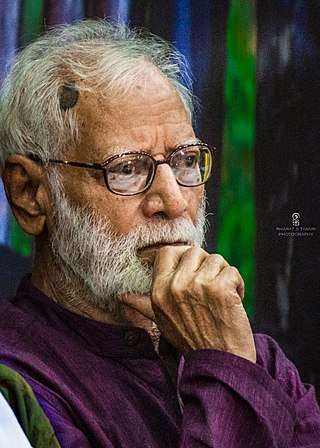
Kashinath Singh is an Indian writer and scholar of Hindi language and known for writing novels and short stories in Hindi. He was formerly a professor of Hindi literature in Banaras Hindu University. He received the Sahitya Akademi Award in 2011 for his novel Rehan Par Ragghu, and is considered one of the best chroniclers of the city of Varanasi. He has recently received 'Bharat Bharti Award', the state's highest literary award given by U.P. government.
Bhabani Bhattacharya was an Indian writer, of Bengali origin, who wrote social-realist fiction. He was born in Bhagalpur, part of the Bengal Presidency in British India. Bhattacharya gained a bachelor's degree from Patna University and a doctorate from the University of London. He returned to India and joined the diplomatic service. Bhattacharya served in the United States, to which country he returned as a teacher of literary studies once he had left the service. He taught in Hawaii, and later in Seattle. In his mid-thirties Bhattacharya began writing fiction set in historically and socially realistic contexts. He wrote in English, his chosen medium following the advice of two prominent literary figures.
Ningthoukhongjam Khelchandra Singh was an Indian writer, lexicographer and historian, known as the author of Manipuri to Manipuri and English, the first modern general dictionary in Meitei language, which was published in 1964. He was a fellow of the Sahitya Akademi and Sangeet Natak Akademi. The Government of India awarded him the fourth highest civilian honour of Padma Shri in 1987.

Joba Murmu is an Indian writer and litterateur who is known for her works in Santali literature. She received the Sahitya Akademi's Children's Literature Award on November 14, 2017 due to her language contribution to Santali literature.
Bharatiya Dalit Sahitya Akademi is an academic organization dedicated to the promotion of Indian Dalit literature, art and culture in the languages of India. The organization is an all India Dalit writers association established 1984. It was founded by Jagjivan Ram, the 4th deputy prime minister of India.











